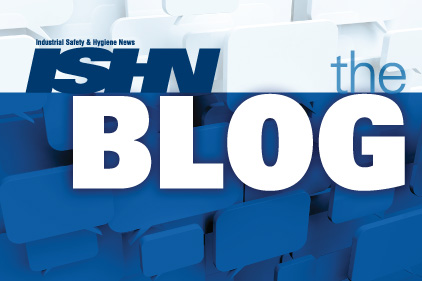 In the movie “Zero Dark Thirty” a brief exchange occurs between a CIA subordinate and his boss at Langley HQ. The subordinate and his team are frustrated. The higher-ups are not with aggression pursuing leads that the team believes could track down Bin Laden.
In the movie “Zero Dark Thirty” a brief exchange occurs between a CIA subordinate and his boss at Langley HQ. The subordinate and his team are frustrated. The higher-ups are not with aggression pursuing leads that the team believes could track down Bin Laden.
“I wonder,” says the subordinate. “how do you assess the risk of doing nothing?”
They don’t make eye contact. The boss pauses from shuffling papers. The subordinate walks down the hall.
The risk of doing nothing.
EHS departments are in the risk assessment business. They assess and analyze many risks from many angles. Bosses want to know: where do our greatest safety risks exist? Where and how will the next “big one,” the next Deepwater Horizon, occur? Prioritize EHS risks from least to most significant.
OSHA for the past several years has encouraged businesses to “find and fix” job risks.
Reports of on-the-job risks, either personal or process-oriented, come in from various sources: employee reports, facility audits, personal observations, review of accident investigation findings, review of injury patterns – location, job task, time of day, body part injured, severity of injury.
Known risks are, or should be, under constant surveillance: confined space entries, lockout-tagout for equipment maintenance, working at heights, working in trenches, working in grain bins, chemical exposures, noise exposures, heat and cold exposures. The list goes on.
EHS departments are fed risk data in volumes. The larger the facility, the larger the workforce, the more data points to analyze. Wireless technology will increase the volume of data coming from monitoring stations and personnel on the move.
EHS departments engage in intelligence gathering and analysis similar to our federal intelligence agencies. EHS don’t spy, some employee complaints to the contrary. But facilities have CCTV cameras operating 24/7. Chemical exposure data comes in through the wireless networks. In high-risk jobs like fire-fighting, mining and oil and gas drilling, personnel in some companies are tagged with chips to know where they are in a crisis.
But here’s a significant point of difference, since 9/11 billions upon billions have been poured into homeland security intelligence operations, which span the globe. Since the Great Recession of 2008-2009, and even before, EHS budgets in many companies have been frozen or have shrunk. More work has been put on the plates of fewer people. Contractors, not always easy to monitor, have been brought in for more project work.
This scarcity of resources raises the risk of doing nothing.
Too many companies are comfortable with this risk of doing nothing in safety and health. Especially when execs know safety only by OSHA injury and illness annual records showing their firm has incident rates better than average, better than last year. Execs don’t know why; the numbers don’t explain that. But why ask why? Especially when economic outlooks are ambiguous at best, competition is coming from every angle, costs must be cut and profits preserved. Competition for internal resources is fierce, and safety looks like it has everything under control. So why act now in EHS, why invest beyond maintenance mode funding?
Of course reasons exist, especially in industries that have been recently burned, such as mining and oil and gas. Multinational supply chains are under attack for fatal factory fires, and reputations are at risk. Healthcare is booming and so is the number of medical errors.
But there are more than seven million workplaces in the U.S. Most are small, flying under the radar screen, anonymous in generic industrial parks or remote rural enclaves. By far most do not have a worker safety and health advocate or expert on staff.
This is where doing nothing for worker safety is most common. The risk of doing nothing isn’t even considered because there is no one on board capable of doing it.
In Zero Dark Thirty, the CIA director goes around a meeting table, asking his advisors the odds that Bin Laden is in the compound they’ve targeted. Most hedge and say 60%. Only the analyst closest to the intelligence, who has studied it to death for years, asserts in the meeting that there is 100% certainty.
Who in your facility has the knowledge to know where the risks are, and how to mitigate those risks? If not an EHS pro, it’s some experienced hand. Or a team.
If you really want to know, someone will be available to tell you the risk, the probable consequence of doing nothing.
We already are saddled with a “do nothing” Congress. And an OSHA that, aside from a few large penalties, can’t seem to do much. Don’t allow this to be the age of “do nothing” safety and health in the workplace.


Recent Comments
In addition to the personal hardship and loss...
No one will know the answer to this...
Bad drivers don't have to ruin your day...
Healthcare workers face a number of serious safety...
In my experience, truck drivers are treated with...